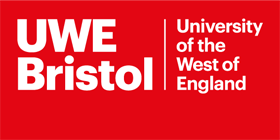SHINE HIT tackles air pollution exposure at the hospital door
- 15th March 2021
Asthma UK and the British Lung Foundation recently published a report, The Invisible Threat, which stated that 29% of hospitals in England are in areas where pollution puts vulnerable people, and healthcare professionals, at risk.
Suzanne Audrey, co-director of the Supporting Healthy Neighbourhoods Health Integration Team (SHINE HIT) and Senior Research Fellow at the University of Bristol, has been working with Nikolai Bode and Daniel Schien at the Faculty of Engineering on a study examining air quality and transport movements in the area around Bristol Royal Infirmary (BRI) and Bristol Royal Hospital for Children.
The research included an online survey asking for people’s views of travelling in the area, which was described as “rammed with petrol and diesel vehicles churning out exhaust fumes and shedding tyre and brake particles, idling either in traffic jams or waiting outside the BRI.” Pedestrians, including disabled pedestrians, trying to access the hospitals described being “stuck on the island in the middle of the road for some time breathing in exhaust fumes”.
One parent explained: “My daughter suffers from severe asthma and has often had overnight stays in the BRI due to this. I feel extremely conscious that, to be treated for this life-threatening illness, she has to travel through one of the most polluted parts of the city – as do all the other children and young people being treated there.”
To improve air quality in Bristol, a clean air zone is proposed with charges for non-compliant private cars, buses, coaches, taxis, HGVs and LGVs driving in the area. But comments from survey participants illustrate some of the difficulties of implementing a charging clean air zone in such an important area of the city. Many people would sympathise with the parent who wrote: “I’ve had to take my kids to the Children’s Hospital on multiple occasions and taking a distressed child on a 40+ minute bus journey to the hospital doesn’t bear thinking about – withholding access to healthcare services from people because they drive the wrong car is not acceptable.”
There were also concerns for hospital staff who “might be on shifts where no public transport is available to get them to or from work” and who “face waiting up to an hour for a bus”.
The current proposals for Bristol’s clean air zone include 1-year exemptions for people attending hospital appointments, hospital visitors, blue badge holders, registered community transport vehicles and low-income earners travelling into or out of the zone for work purposes.
The Invisible Threat report called for urgent action to reduce air pollution exposure at the hospital door: there will be much to learn from the difficult process of trying to achieve this in central Bristol, and a further research proposal is being submitted by the team.
Suzanne wrote an opinion piece for Bristol 24/7 on the topic which was published on 11 March 2021.






